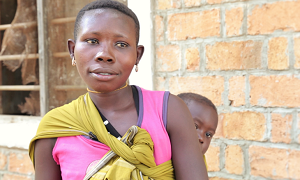 In many districts in Tanzania, adolescent girls and young women are dropped out of school due to early pregnancies and early marriage.
In many districts in Tanzania, adolescent girls and young women are dropped out of school due to early pregnancies and early marriage.
According to national level survey, more than 80,000 female students are dropped out of school. Dropout often occurs in transit from primary to secondary education. Only 53% of female students continue to secondary education whereas 58% male students.
As part of a project in Tanzania under the Joint Programme on Empowering Adolescent Girls and Young Women through Education, an assessment was conducted in Kasulu, Sengerema and Ngorongoro districts by UNESCO in partnership with the Tanzania Institute of Adult Education. The assessment served to understand the learning needs of the adolescent girls and young women.
Participants to the assessment included more than 100 out-of-school adolescent girls and young women aged 14-24, their parents, traditional and religious community leaders, and ward and district officers.
The preliminary findings showed a high prevalence of illiteracy in the districts. A significant number of adolescent girls and young women still do not know how to read or write. Most of the girls interviewed dropped out of upper primary school and others have never been to school.
The main reasons for dropping out of school are teenage pregnancy and early marriages. During the assessment in Kasulu district, for instance, most of the girls interviewed were either a mother or pregnant. They are burdened with all household chores while their parents are away working in the farms. This situation can last for weeks especially during the planting season.
The assessment found another challenge; a high number of out-of-school girls are not engaged in any income-generating activities hence dependent on their parents for a living. They are left behind at home without access to information on alternative learning opportunities available in their community.
 In spite of the challenges, out-of-school girls expressed a strong motivation for education as a means to social and economic empowerment. They especially indicated basic literacy, numeracy and life-skills education, including parental and health education, as key to improving their lives. Particularly, tailoring, farming, bakery, cookery, hair making, business management and hotel management were discussed with regards to entrepreneurship skills.
In spite of the challenges, out-of-school girls expressed a strong motivation for education as a means to social and economic empowerment. They especially indicated basic literacy, numeracy and life-skills education, including parental and health education, as key to improving their lives. Particularly, tailoring, farming, bakery, cookery, hair making, business management and hotel management were discussed with regards to entrepreneurship skills.
Based on the final need analysis, skills training tailored to each ward and district will be provided to more than 400 out-of-school adolescent girls and young women at community youth centers from May this year on literacy, numeracy and entrepreneurship.
During a meeting held in Kasulu, young mother Asia Danford said “I cannot read and write. However with the exercises today, I have already started to put efforts into learning how to read and write.” Girls also showed interest in joining the training.
This assessment was part of the project in Tanzania under the Joint Programme on Empowering Adolescent Girls and Young Women through Education. The project, delivered with support from KOICA, is set to benefit over 20,000 adolescent girls and boys in Tanzania.
Grounded in the collective commitment of three UN agencies, UNESCO, UN Women, UNFPA, the Joint Programme addresses the needs of adolescent girls, teenage mothers and young women to have quality educational opportunities.
More information:
- UNESCO-UNFPA-UN Women Joint Programme
- UNESCO’s work on education and gender equality


